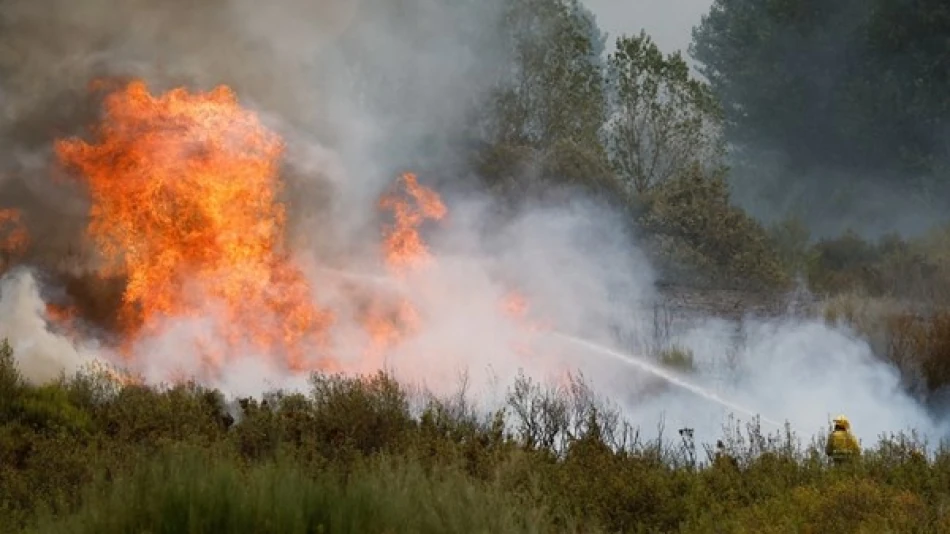
Spain's Wildfires Winding Down: Relief on the Horizon
Spain's Devastating Wildfire Crisis Nears End After Two Weeks of Destruction
Spain's civil defense chief announced Saturday that the country's worst wildfire outbreak in years is finally approaching its end, with only 18 active blazes remaining after two weeks of destruction that claimed four lives and consumed hundreds of thousands of hectares. The fires, fueled by a brutal 16-day heatwave with temperatures reaching 45°C, highlight Europe's growing vulnerability to climate-driven disasters.
The Final Push Against "Treacherous" Blazes
Virginia Barcones, Spain's Civil Defense Director, told public broadcaster TVE that while "there's nothing significant left, and the end is near," the remaining fires are "treacherous" and require "one final effort to end this dire situation." Her cautious optimism reflects the unpredictable nature of wildfires, which can reignite even when seemingly under control.
Of the 18 active fires, 17 still pose direct threats to people and property. The Iguiñoa fire in the northwestern Castile and León region remains particularly concerning, suggesting that Spain's firefighting resources remain stretched despite the overall improvement.
Western Spain Bears the Brunt
The fires have disproportionately affected Spain's western regions—Galicia, Castile and León, and Extremadura—areas that combine dense forests with rural communities. This geographic concentration mirrors patterns seen in other Mediterranean countries, where topography and vegetation create natural fire corridors.
The timing coincided with Spain's most severe heatwave of the summer, with temperatures reaching 40°C nationwide and 45°C in southern regions. This 16-day heat dome created the perfect storm for wildfire ignition and spread, turning Spain's forests into tinderboxes.
Climate Change's Accelerating Impact on Europe
Spain's wildfire crisis reflects a broader European trend of increasingly severe fire seasons. Countries like Greece, Italy, and Portugal have experienced similar devastation in recent years, suggesting that Mediterranean Europe is entering a new era of fire risk management.
The improving conditions—higher humidity, weaker winds, and cooler temperatures—that Barcones cited as favorable for firefighting efforts underscore how dependent fire suppression has become on weather patterns. This dependency highlights the challenge facing European governments as climate change makes extreme weather more frequent and unpredictable.
Economic and Environmental Toll
While the immediate human cost stands at four fatalities, the broader economic impact will likely reach hundreds of millions of euros in damages, lost tourism revenue, and firefighting costs. The destruction of hundreds of thousands of hectares also represents a significant blow to Spain's carbon sequestration capacity and biodiversity.
For Spain's agricultural sector, concentrated in the affected regions, the fires threaten both immediate crops and long-term soil fertility. The country's position as a major European food producer means these local fires could have continent-wide economic ripple effects.
Lessons for European Fire Management
Spain's experience offers crucial insights for European fire management strategies. The concentration of fires in western regions suggests that early warning systems and resource pre-positioning could be more geographically targeted. Additionally, the role of the extended heatwave in creating fire conditions points to the need for integrated climate and fire risk forecasting.
As Europe faces longer, hotter summers, Spain's current crisis may become the template for future fire seasons across the Mediterranean basin, making effective cross-border cooperation and resource sharing increasingly critical for continental fire management.
Most Viewed News

 Layla Al Mansoori
Layla Al Mansoori






